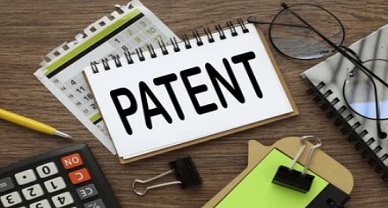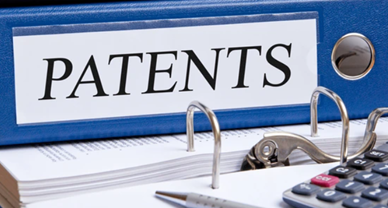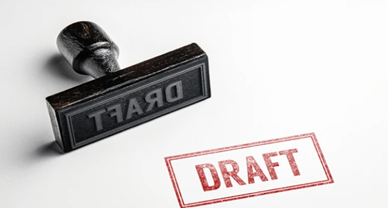Understanding Software Patents in India: A Comparative Analysis of India and the USA
The Debate Over Software Patents
The dispute over software patents focuses on two issues: first, whether computer software is patentable, and if so, what should be the boundaries of patent protection. There are variances on both of these fronts, but in the interim, major patent offices throughout the world have granted several software patents, leading to the development of various examination guidelines and case laws, and thereby creating varying standards of protection.
Understanding software patents in India requires a close examination of the legal framework governing software patentability under Indian law. As per Section 3(k) of the Indian Patent Act, mere algorithms or business methods are not patentable unless they demonstrate a technical effect or contribute to a larger invention. The computer software patent rules in India have evolved, particularly through the CRI Guidelines, to provide more clarity on what qualifies as a patentable invention. However, the patent eligibility of software inventions in India still depends on factors like technical contribution, industrial application, and novelty, making the process both complex and case-specific.
Despite the absence of a universally accepted definition, a software patent is often understood—per the Foundation for a Free Information Infrastructure—as a patent on any computer performance achieved through procedures for a computer programme. Software patents protect the designs and concepts embedded in software, and a granted patent may prevent others from developing software that performs a function in a specific way or from using a particular set of computations.

The Role of Patent Law in Software Innovation
The rapid development of software—from a scientific and mathematical tool to a technology embedded in nearly every aspect of modern life—has complicated its position under patent law. Software, being a theoretical innovation, often falls outside traditional notions of patentable subject matter, which generally exclude original ideas not tied to practical applications.
This article examines software patentability through a comparative analysis of India and the United States, focusing on legal enforceability and judicial interpretations.
Software Patents in India: Legal Framework and Evolution
The Patent Amendment Act of 2005 attempted to establish software patents in India by proposing changes to Section 3(k) to permit software with a technical application to industry or in combination with hardware. However, the Indian Parliament rejected this amendment, maintaining the original form of Section 3(k), which explicitly excludes “a computer programme per se” from patentability.
Under Indian law, software on its own is not patentable. The software must be part of a larger, patentable invention, such as a system involving hardware. Mere incorporation of software into standard hardware does not qualify it as an invention.
Interpretation of “Per Se” in Section 3(k)
The Joint Committee on the Patent (Second Amendment) Bill, 1999, clarified that the term “per se” was added to indicate that while software alone isn’t patentable, software incorporated into or contributing to a broader technical invention may be. This clarification ensures that protection is not entirely denied to software-related inventions with genuine technical merit.
The Delhi High Court’s ruling in Ericsson v. Intex confirmed this stance by stating that computer-related inventions with technical contributions or effects are patentable under Indian law.
Inconsistencies Among Indian Patent Offices
Until 2015, India’s patent offices in Kolkata, Mumbai, Delhi, and Chennai showed inconsistency in granting software patents. This issue was highlighted in Yahoo v. Controller, where it was noted that some offices granted software patents while others did not.
To resolve this, the Controller of Patents issued the Computer-Related Inventions (CRI) Guidelines. The 2016 guidelines introduced a three-stage test to determine patentability:
- Reject if the contribution is only a mathematical, business, or algorithmic method.
- Evaluate if the contribution is in conjunction with novel hardware.
- If the contribution lies solely in the software, reject the claim.
Revised CRI Guidelines in 2017
Due to criticisms of the 2016 guidelines, revised CRI guidelines were released in 2017. These eliminated the three-step test and removed references to novel hardware, signaling a shift in examination but maintaining the core position that software “per se” remains non-patentable. The Indian Patent Office emphasized that the new guidelines did not change the policy but only clarified existing practices.
Software Patents in the USA: Judicial Shifts and Policy Changes
Initially, US courts were skeptical of software patents, considering them unpatentable due to their mathematical nature. However, in Diamond v. Diehr, the U.S. Supreme Court ruled that an invention involving a computer programme could be patentable if it contributed to a physical or industrial process.

In Diehr, the software-controlled method for curing rubber was found to be a practical application rather than an abstract idea. The court emphasized that the presence of a mathematical formula did not exclude an invention from patentability if the software performed a real-world, useful function.
Thus, US law requires that software patent claims must go beyond abstract ideas and demonstrate practical application and technical contribution.
India vs. USA: A Comparative Perspective
The United States has a broad interpretation of software patentability, often summarized by the phrase: “anything under the sun that is made by man.” The U.S. permits software patents as long as the invention demonstrates utility and is tied to a concrete process or application.
India, in contrast, takes a more restrictive view, requiring a demonstrable technical advancement and integration with hardware or industry-specific application. The differences between the two systems show a divergence in policy: India’s focus is on limiting the scope to ensure only genuine innovations receive protection, while the U.S. encourages broader coverage to foster innovation.
Global Disparities in Software Patent Protection
Software patent protection varies widely across jurisdictions. While TRIPS agreements offer copyright protection for software, their stance on patents is ambiguous. This lack of harmonization has led to legal fragmentation, with countries adopting stances influenced by domestic priorities.
This article underscores the stark contrast between India’s restrictive approach and the USA’s liberal policy, reflecting differing perspectives on innovation, intellectual property, and economic development. As technology continues to evolve, so too will the laws governing software patents—hopefully toward greater international coherence.
Securing patent protection for software in India involves navigating a nuanced legal framework that distinguishes between abstract ideas and patentable innovations. While Indian laws on software inventions exclude standalone software from patentability, they allow protection when software is integrated with novel hardware or produces a technical effect. This makes it essential for developers and companies to understand the criteria set forth under CRI Guidelines. As software innovation patents in India continue to be debated, staying updated on judicial interpretations and evolving guidelines is crucial for safeguarding intellectual property.


